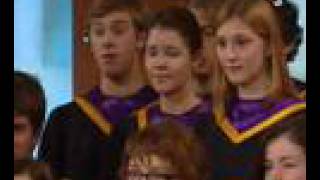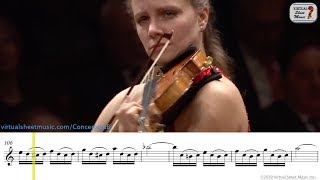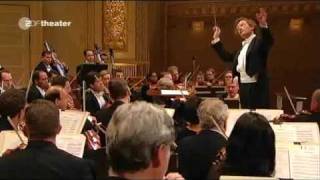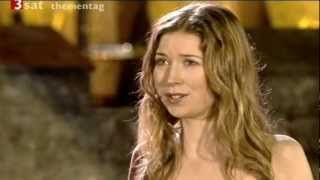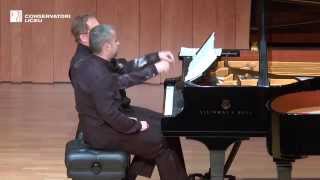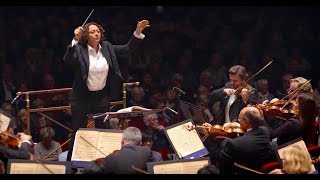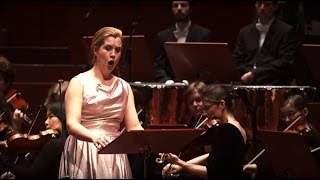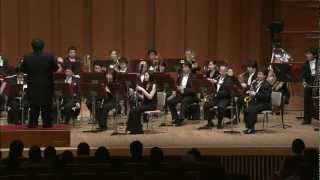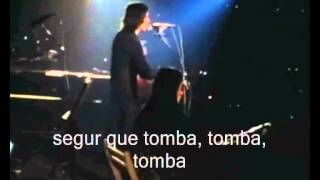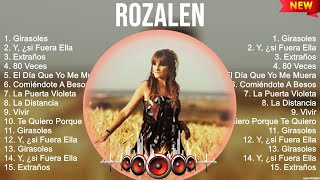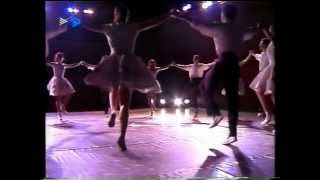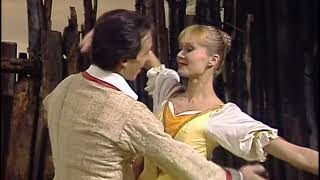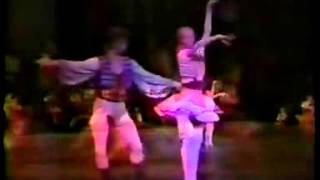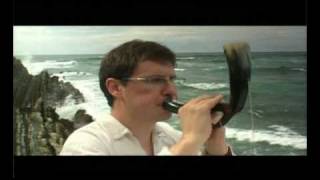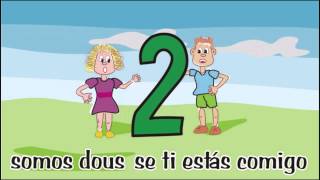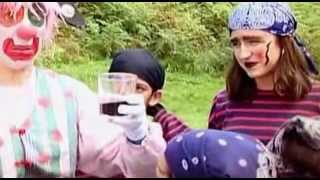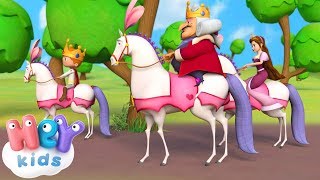On September 11, the Diada (Catalonia Day) is celebrated.
Recommended music videos for initiation to classical music
Enric Morera i Viura (1865 - 1942) was a Catalan composer and musician. He wrote operas, stage music, symphonic works, choral works, concertos and a Requiem Mass ; but above all he is recognized for his choral sardanas. His work falls within the neo-romantic aesthetic and is a magnificent example of Catalan musical nationalism. So much so, that he wrote in Catalan (instead of Italian), everything concerning tempos, dynamics, agogics, etc. Also noteworthy is the non-use of key signature in his songs. All alterations are accidental, opting for this form of writing, like other composers of his time. Enric Morera 's personal collection is preserved in the Library of Catalonia .
L´Empordà is a sardana with music by Enric Morera and lyrics by Joan Maragall written in 1908 at the request of the Amics Tintorers choir of Barcelona as a present for the Erato Choral Society of Figueres . It is a sardana for male choir with an energetic rhythm, although it is frequently covered in a mixed choir, as in the present case, sung by the Knox College Choir . It has been the official anthem of the Alt Empordà region since 2012.
Johann Sebastian Bach (1685-1750) was a German violinist, organist, conductor and composer, born in Eisenach into the most prominent musical family in history. In 1703 he obtained his first job in Arndstat and in 1707 he moved to Mülhausen as an organist, where he married his cousin Maria Barbara with whom he had seven children. After the death of his wife in 1720, he remarried Mary Magdalene with whom he would have another thirteen children. In 1723 he moved to Leipzig where he would reside until his death at the age of 65. Considered one of the three main geniuses in the History of Music along with Mozart and Beethoven, his influence has been notable on Haydn , Mozart , Beethoven , Mendelssohn , Schumann , Chopin ... and many other renowned composers.
The Violin Concerto in A minor, BWV 1041, seems to have been written by Bach shortly after moving to Leipzig and structured in the manner proposed by Vivaldi ; that is, in three movements (Fast-Slow-Fast); Of them, today we offer the first written in ritornello form; meaning that there is a main section that returns in fragments in both the solo violin and the orchestral parts. The motifs of the theme appear in changing combinations and separate and intensify throughout the movement.
Your soloist today, Julia Fischer (1983), one of the most important violinists in the world, is a German violin and piano virtuoso. At the age of twelve she won the Yehudi Menuhin violin prize and in 2007 she was declared “Artist of the Year” by Gramophon magazine. In order not to go into detail with the enumeration of her numerous and important recognitions, we will say that although dedicated to the violin, she has never wanted to move away from the piano. He has performed in the main venues in the world with the best conductors as a violin soloist, although he has also performed sporadically as a piano soloist.
Johann Strauss (son) (1825-1899) was an Austrian composer, son of Johann Strauss and brother of the composers Josef Strauss and Eduard Strauss ; Known in life as “the king of the waltz”, he was an essential factor in its evolution and sophistication, going from being a peasant dance to an entertainment dance of the Imperial Court . He is the best known of the family for his waltzes, his polkas and his marches; composer, also, of several operettas. His father wanted to prevent his son from going through the hardships of a musician's life, so it was his mother who helped and encouraged him to focus on music. His work forms the basis of the repertoire offered annually at the Vienna Philharmonic Orchestra 's New Year's Concert .
The Polka (or polka) is a popular dance that appeared in Bohemia (now the Czech Republic) around 1830, which began to become popular in Prague from 1835. Its music is written in 2/4 time and fast time; it is danced with lateral steps and quick evolutions; It became very popular in Europe and America .
Today we are witnessing the performance of one of those polkas by the Vienna Boys' Choir accompanied by the Vienna Philharmonic under the baton of Zubin Mehta , Indian conductor, head of the Israel Philharmonic and considered one of the most eminent conductors of the Philharmonic. present.
John Andrew Stevenson (1761 – 1833) was an Irish composer. He is best known for his piano arrangements of Irish tunes with the poet Thomas Moore . The University of Dublin awarded him an honorary doctorate and he was knighted in April 1802. Stevenson's secular works include operas, sonatas, concertos, symphonies, captures, jubilations, odes, operas, songs and arrangements of traditional music, although for By 1825, Stevenson had composed a large body of church music amounting to twenty-six hymns and eight service arrangements, not to mention hymns, double hymns, hymns, and the oratorio The Thanksgiving Day
The Last Rose of Summer is originally a poem by Irishman Thomas Moore written in 1805; two years later John Andrew Stevenson would set the poem to music. The poetry metaphorically uses "the last rose" in response to the sadness of being left alone after loved ones are gone. It evokes the feeling of sadness at the end of life, since everything around you has faded or died. Friedrich von Flotow uses the song for his opera entitled " Martha ", Ludwig van Beethoven composed a theme and three variations for flute and piano, op. 105, based on the song and Felix Mendelssohn , a Fantasy in E major, op. fifteen.
Recommended classical music videos
Benet Casablancas (1956) is a Catalan composer, pedagogue and musicologist, who since 2002 has been the academic director of the Liceo Superior Conservatory of Music (Barcelona). His works, the subject of numerous commissions and distinguished with numerous national and international awards, are regularly performed on the main stages of Europe, Canada, the USA, Japan and Latin America by groups, soloists and directors of the greatest prestige. Casablancas has been an advisor to different institutions and patron of various foundations, publishing numerous articles on historical and analytical topics, frequently being requested as a jury in European musical composition and performance competitions and as a guest professor at different international centers.
Divertimento is a musical form that was very popular during the 18th century , composed for a small number of instruments; There are even cases of divertissements dedicated to solo instruments (as in the present case) or to chamber orchestras. The divertimentos used to (usually) show a carefree and happy style (in Italian, divertimento means 'fun'); In French it is called divertissement , and its plural in Italian is divertimenti . It is similar in shape to the suite , and like it, it was originally made up of dance movements, although shorter and simpler, and freer as a whole. The number of movements it contains is variable and there are examples of up to 13 movements.
Today we offer the Tre Divertimenti of Casablancas (I: 0´00´´ .-. II: 2´29´´.-. III: 6´35´´) written for four-hand piano performed by Emili Brugalla and Vesko Stambolov .
Georges Bizet (1838-1875) was a French pianist and composer who did not have many successes during his lifetime. Bizet won several awards throughout his brilliant career as a student at the Paris Conservatoire , including the prestigious Prix de Rome in 1857. He was recognized as an exceptional pianist, although he preferred not to take advantage of his skill and rarely played in public. His best-known opera, Carmen , achieved sensational success at its premiere that he did not enjoy as he died three months later of a heart attack at the age of 39. The rest of his works were cornered and rescued little by little in the 20th century. Despite this, he is currently considered a reference of the 19th century and a brilliant and imaginative composer.
L'Arlesienne ( The Girl from Arlesienne ) is a composition of incidental music written by Georges Bizet for Alphonse Daudet 's work L'Arlésienne and which consisted of 27 numbers (some of a few measures) for voice, choir and chamber orchestra. Later Bizet himself would arrange the work, summarizing it into a suite (today known as Suite No. 1 ). The so-called Suite No. 2 (17'40'') was arranged and published four years after the composer's death by Ernest Guiraud .
Today we can view both suites under the baton of maestro Nathalie Stutzmann alto and French conductor and principal guest conductor for the 2021-2022 season of the Philadelphia Orchestra .
Robert Schumann (1810-1856) was a German composer, one of the pillars of Romanticism . He studied piano, although due to an incurable injury to his right hand, he left his piano career to focus on composition. He married Clara Wieck (“Clara Schumann”), daughter of his teacher, composer and prodigious pianist; Both maintained a close friendship with Brahms . From the age of 23 he suffered several depressive episodes and hallucinations with a suicide attempt in 1854. Until the age of 30 he only wrote works for piano and lieder (songs); but encouraged by his wife, he dared to write works of greater weight and thus he would write several choral works, chamber works, orchestral works among which his four symphonies, a dramatic poem, Manfred , an opera and the Oratorio that we present today should be highlighted.
Das Paradies und die Peri (Paradise and Per i), Op. 50, is a secular oratorio written by Robert Schumann whose plot is an adaptation of a story taken from the work Lalla-Rookh by Thomas Moore. The Peri , a creature from Persian and Islamic mythology, after being expelled from Paradise , needs to bring the most beloved gift to heaven. In India (ACT I: 1'00'') he collects the last drop of blood from a young fighter. In Egypt (ACT II: 25'48'') he takes the last breath of a young woman who has sacrificed herself for her lover. In Syria (ACT III: 53´35´´) he obtains the tear from the cheek of an old repentant sinner who had seen a child begging. With all this he finally gets the doors of heaven to open again.
Gustav Holst (1874-1934) was a British trombonist, arranger, composer and teacher. He is primarily known for his orchestral suite The Planets , for although he composed many other works in a variety of genres, none achieved comparable success. His distinctive compositional style was the product of many influences, with Richard Wagner and Richard Strauss being the most crucial early in his development. The subsequent revival of English popular song of the early 20th century and the example of emerging modern composers such as Maurice Ravel led Holst to develop and refine his personal style. His compositions had a marked influence on several younger English composers, such as Edmund Rubbra, Michael Tippett and Benjamin Britten .
The First Suite in Eb for Military Band , Op. 28, No. 1, by the British composer Gustav Holst , is considered one of the fundamental masterpieces of the Brass Band repertoire. The work has three movements:
I MOV (0´03´´) "CHACONA": This movement, in 3/4 time, is based on an eight-bar melody started by the low brass that is repeated sixteen times throughout the piece. Holst uses many colorful effects to vary the chaconne theme, especially with the theme notes in the brass and percussion while the woodwinds play virtuoso sixteenth notes.
II MOV (5´00´´) "INTERMEZZO": Almost all of this movement is dedicated to a rhythmic and well-articulated oboe, clarinet and cornet solo. The exploitation of the combinations of tones and colors of the Music Bands gives flavor to this movement. While the movement is predominantly light in character, the clarinet has a stirring solo, which is then repeated by other voices.
III MOV (7´45´´) "MARCHA": It opens with a famous bass drum solo, one of the few in Banda literature. It features two primary melodies, both very contrasting in style. The first melody is presented exclusively in the brass section in a very marked way. The second melody on the middle and low wind instruments, and later the euphonium, baritone saxophone and bassoon, resembles the melodies of the first two movements and is played in a very legato and lyrical style. The last bars are very powerful (marked ffff) and have one of the most famous trombone solos in the Banda repertoire.
Recommended music videos for all tastes
Lluis Llach (1948) is a Catalan singer-songwriter, promoter along with other colleagues of the Catalan Nova Cançó and author of various protest songs during the Franco era. In 1969 he gave a solo recital at the Palau de la Música, demonstrating his popularity among the population of all ages. In 1973 he performed at the Olimpia in Paris with great success among the public and critics; At this time he also performed in Switzerland, Germany and Mexico . In 1976, after Franco 's death, he gave three recitals at the Montjuïc Sports Palace. In 1979 he was the first non-operatic singer to perform at the Liceo de Barcelona and in 1985 he filled the Camp Nou with more than 100,000 spectators. In 2007 he decided to end his career in a concert given in Verges (Girona).
L'estaca (Spanish, " The Stake ") is a song composed in 1968 by Lluís Llach . This song, which has been translated into many languages, has become so popular that in many places it is considered native (even the Polish union Solidarity adopted this song as its anthem). It was composed during the dictatorship of dictator Franco in Spain and is a call for unity of action to free oneself from ties, to achieve freedom. It has become a symbol of the fight for freedom. “Don't you see the stake where we are all tied? If we can't get rid of it, we will never be able to walk! ...If I pull hard here and you pull hard there, I'm sure that, grave, grave, grave, we can free ourselves.”
Walter Maynard Ferguson was a Canadian jazz trumpeter born in Montreal , who began his career at the age of 13 as a soloist in Canada , forming his own group at a very young age. He played with musicians such as Dizzy Gillespie and Stan Kenton . His fame spread when he composed the music for the film Rocky , " Gonna fly now", "Now I'm going to fly", starring Sylvester Stallone . For this song he was nominated for the Grammy Awards in 1978. For many critics he is the most notable trumpeter suggested in Canada , the high notes of his trumpet were spectacular, as can be seen in this recording.
María de los Ángeles Rozalén Ortuño (Albacete, 1986), known artistically as Rozalén , is a Spanish singer-songwriter and composer. He has released five albums, titled With the right to..., Who has seen me..., When the river sounds..., The tree and the forest and Matriz . In 2021 she was recognized with the National Prize for Current Music . Since she was a child, Rozalén sang the songs her mother and grandmother taught her, recited poetry and took her first dance classes. From the age of 7 he was part of the rondalla of the Fátima neighborhood of Albacete , to which he belonged for 9 years. After her debut in Basque, Rozalén was proud: "It (a language) is beautiful and ancient."
Tina Turner (1939-2023) was a singer and songwriter, who developed her career for more than fifty years. Considered the "Queen of Rock" , she retired from the stage and music in 2013 at the age of seventy-three, after a musical career of fifty-four years. She began her musical career in the mid-1950s as a performance singer with her husband , Ike Turner , songwriter and leader of the band Kings of Rhythm . As a solo artist, her 1984 album Private Dancer launched her back to stardom, achieving international success and expanding her career into film in 1975. She has sold more than two hundred million albums worldwide. In 2013 he acquired Swiss nationality, renouncing his American nationality.
Recommended peculiar videos
The sardana is a dance performed in a group and in a circle, traditional in Catalonia . Participants hold hands in pairs, using an alternating pattern of woman-man-woman-man. The sardana is played formally by a cobla (wind band with typical Catalan instruments and double bass); The current formation of the cobla and the stabilization of its rhythmic pattern corresponds to José María Ventura . The circle dance style can be found in numerous cultures around the world and the act of holding hands dates back, according to some authors, to Roman times. The composition of the cobla and the current choreography of the dance were established and unified in the 19th century . In 2010, the Generalitat of Catalonia declared it a festive heritage element of national interest .
La Santa Espina is a sardana written by Ángel Guimerá with music by Enric Morer a. It premiered on January 19, 1907 at the Teatro Principal in Barcelona and its performance was prohibited during the dictatorship of Primo de Rivera , as well as in the first part of Franco because "certain elements have turned the sardana La Santa Espina into an anthem." representative of hateful ideas and criminal aspirations, listening to his music with the respect and reverence that is paid to national anthems.” Later, after his death, the piece was performed in January 1983 by the Royal Guard in a concert held in the El Pardo barracks.
Peter Ludwig Hertel (1817 – 1899) was a German composer of dance and ballet music, best known for his ballet La fille mal gardée. He also composed the music for Fausto's ballet Satanella oder Metamorphosen and " Die Abenteuer von Flick und Flock " (The Adventure of Flick and Flock), both choreographed by Paul Taglioni . Born in Berlin , Hertel studied violin and composition with the renowned musicians of his time, Eduard Rietz, Friedrich Schneider and Adolf Marx . From 1858 until his death he worked as Kapellmeister and composer at the Royal Opera House . In 1860 he worked as a guest conductor at London's Covent Garden .
La fille mal gardée (Spanish: The Badly Guarded Girl) is a comic ballet presented in two acts, inspired by Pierre Antoine Baudouin 's 1765 painting, La réprimande/Une jeune fille querellée par sa mère . The ballet was originally choreographed by ballet master Jean Dauberval to a mixture of music, based on fifty-five popular French airs. La fille mal gardée is one of the oldest and most important works in the ballet repertoire, and has remained alive over the years since its creation through many changes of title, and even, of scores. Since the 20th century it has usually been presented in Alexander Gorsky 's version with music by Peter Ludwig Hertel .
Pierre Antoine Baudouin 's painting showed a crying girl with her clothes in disarray being scolded by an old woman (presumably her mother) in a hay barn, while her lover can be seen in the background running up the stairs to the safety of the attic. This picturesque work of art so amused Dauberval that he immediately set about creating a suitable setting for a ballet, which was first performed at the Grand Theater of Bordeaux , on July 1, 1789.
Plot: Lise and Colas are in love and want to get married. However, the widow Simone wants Lise to marry the dim-witted but extremely wealthy Alain , and has arranged (with Alain 's father, Thomas ) a marriage contract between Lise and Alain . The widow Simone tries her best to keep Lise and Colas apart, but is unsuccessful in her attempts.
AUTHORS: Alexander Gorsky with music by Peter Ludwig Hertel. PERFORMERS: Valentina Kozlova and the Basler Ballett choreographed by Heinz Spoerli, Vienna Symphony conducted by John Lanchbery. VIDEO DIRECTOR: José Montes-Baquer ,
André Messager (1853 - 1929) was a French composer and conductor. He was born in Montluçon, studied in Paris , and was for a period a student of Saint-Saëns . In 1874 he was appointed organist at St Sulpice ; In 1876, he won the gold medal of the « Société des Compositeurs » with a symphony and in 1880 he was appointed musical director at Ste. Marie-des-Batignolles . Messager composed 45 stage works, of which eight are ballets; He also composed a symphony and numerous songs and instrumental works. In addition to directing for some years the "Opéra Comique" theater in Paris , Messager 's services were also secured in London in 1901 and years later he was one of the directors of the Covent Garden opera house.
Les Deux Pigeons is a ballet in two acts originally choreographed by Louis Mérante to music by André Messager . The libretto by Mérante and Henri de Régnier is based on the fable The Two Doves by Jean de La Fontaine . The work was first performed at the Paris Opera on October 18, 1886. The score is dedicated to Camille Saint-Saëns , whose influence helped Messager secure the ballet commission.
As the protagonist in today's performance we have Sylvie Guillem (1965), famous French dancer, prima ballerina at the Paris Opera Ballet between 1984-89 and the Royal Ballet of London (1989-2003).
The Alboka is a traditional Basque wind instrument with a double musical pipe, which, although the two pipes are independent, are played simultaneously; As for the tuning, it depends on the region in which we are: the albokas made in the Arrati region (Bizkaia) are tuned in A ♭ , while those made in Zegama (Gipuzkoa) are tuned in Bb . Normally, the players play the melody with the five-hole body on the left and the accompaniment with the three-hole body on the right. The alboka is usually accompanied by a tambourine, where the jota , the porrusalda and the march are its usual musical genres. To play the alboka , circular or continuous breathing is used; that is, inhaling and touching at the same time.
Ibon Koteron (1967) is a Basque musician and one of the most active albokalaris today. He began learning to play this musical instrument at the age of 20 and immediately began teaching. Today, he directs the most important school in the Basque Country , together with the well-known musician Kepa Junkera . He has organized various events in honor of some of the main traditional albokalaris, such as those held for León Bilbao (Artaga, 1996) and "Txilibrin" (Bilbao, 1998) and has collaborated on different occasions with the musicians Tomás San Miguel, Fran Lasuen , Tapia and Leturia and Berrogüetto , among others. He is also a philosophy professor and bagpiper in Navarra .
Recommended music videos for children
Various Wikipedia articles have been used to write these texts.
The texts of Videomusicalis are written in Basque, Spanish and English.





